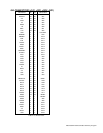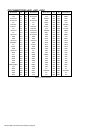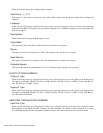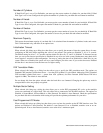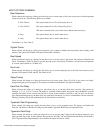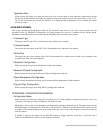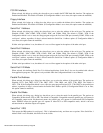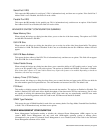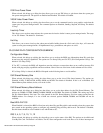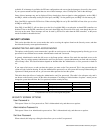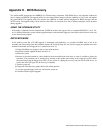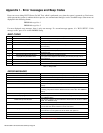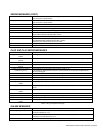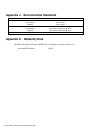
Advanced/ZP Technical Product Summary • Page 31
available. If an interrupt is available, the PCI auto-configuration code can assign the interrupt to be used by the system.
If your system contains an ISA agent that uses one of these interrupts, select Used By ISA Card for that interrupt.
Some of these interrupts may not be displayed if they already have been assigned to other peripherals, such as IRQ 3
and IRQ 4, which are normally used by the serial ports, and IRQ 7 for the parallel port, and IRQ12 for the mouse port.
Note: One IRQ is required for PCI devices. When selecting IRQs for use by ISA the BIOS will not allow you to select
all IRQs as used by ISA.
Note: IRQ 14 and IRQ 15 will not show up on the list of available IRQs, even when the on board IDE controllers are
disabled. If the on board IDE controllers are not used, these IRQs may be used for ISA cards, even though they do not
show up on the menu. These interrupts will not be used by PCI devices other than the IDE controllers, as they must
remain available for bootable devices.
SECURITY SCREEN
This section describes the two access modes that can be set using the options found on the Security screen, and then
describes the Security screen options themselves.
ADMINISTRATIVE AND USER ACCESS MODES
The options on the Security screen menu make it possible to restrict access to the Setup program by allowing you to set
passwords for two different access modes: Administrative mode and User mode.
In general, Administrative mode has full access to the Setup options, whereas User mode has restricted access to the
options. Thus, by setting separate Administrative and User passwords, a system administrator can limit who can change
critical Setup values. The actual limitations depend on whether either the Administrative or User passwords or both are
set.
If you want to limit access to who can boot the system, you must set the User password. This is the password that the
system will ask for before booting. If only the Administrative password is set, the system will boot up without asking for
a password. If both passwords are set, you can enter either password to boot the system.
This table shows the effects of setting the Administrative and User passwords. (The table is for reference only, and is
not shown on the Security screen.) In the table, the statement “Can change a limited number of options” means you can
change the system date and time, the User password, and the security hot key.
Password Set Administrative mode can: User mode can: Pswd Required at Boot
Neither Change all options* Change all options* None
Administrative only Change all options Change a limited number of options None
User only N/A Change all options User
Both Change all options Change a limited number of options Administrative or User
Table G-1. Password Settings
* If no password is set, any user can change all Setup options.
SECURITY SCREEN OPTIONS
User Password is
This reports if there is a User password set. This is informational only, and there are no options.
Administrative Password is
This reports if there is an Administrative password set. This is informational only, and there are no options.
Set User Password
When selected, this brings up a dialog box that allows you to set the User password.



